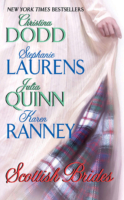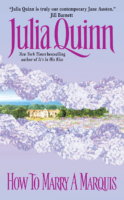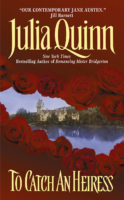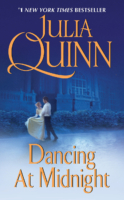Inside the Story
There is always more to the story — the story of writing the book, that is. For each book I gather a few interesting tidbits, sometimes some images, even a few videos. These appear on each book page, but I've also gathered them all here, too.
Inside The Viscount Who Loved Me
- I went through three outlines for this book before I found a plot and premise that I felt worked. The story required Anthony’s father to have died about ten years before the book began, but in The Duke and I, which was completely edited (but not yet published), his father had died two years earlier. While doing the final proofread of The Duke and I, I had to go back and make all the changes. I was terrified that I would miss a mention!
- Regular readers know that I love to include animals in my books. Newton, the overweight corgi, was modeled after Homer, a very friendly corgi who lived on my street. Corgis, while not an officially recognized breed in Britain until the 1920s, originated in Wales during the Middle Ages. Corgis are also very popular with the royal family. Queen Elizabeth’s dogs are “dorgis,” which are corgi-dachsund mixes.
- If there is one scene (from any of my books) I hear about the most from my readers, it’s the Bridgerton Pall Mall game. And indeed, I enjoyed writing it so much, I brought everyone back for a rematch in the 2nd Epilogue to The Viscount Who Loved Me. But this famous scene almost never happened. I was about 2/3 into the book when I realized that everything seemed to be happening too fast. Specifically, Kate and Anthony seemed to have gone from dislike to admiration too quickly. I realized I needed to add a scene in which Kate realized that Anthony wasn’t such a bad guy, and the best way to do that would be to show him interacting with his family. And thus the Pall Mall game (and the Mallet of Death!) was born.
- Speaking of Pall Mall, this was indeed the name for croquet at the time, or at least the closest thing I could find to it. I don’t believe that the rules were the same as they are today, but then again, I’ve never played croquet by the official rules.
Inside The Duke and I
- Of all my books, The Duke and I was the most difficult to title. I have a personal fondness for Daphne’s Bad Heir Day, but How to Bear an Heir was also a contender for the “Most Fun Titles You Never Used” award.
- Eagle-eyed readers will spot a few of my favorite past characters in the pages of The Duke and I. The heroes from both Everything and the Moon and How to Marry a Marquis are mentioned in Chapter One (although neither actually says anything). And of course Lady Danbury is right there in the thick of it. She first appeared as a major secondary character in How to Marry a Marquis, and I liked her so much I thought it would be fun to bring her back. Little did I know that this would be the first of many, many Lady Danbury appearances. In fact, I think she might be my very favorite character to write.
- Lady Whistledown’s Society Papers, which made their debut in The Duke and I, came about almost by accident. I was writing the opening scene, and I realized that I needed to impart quite a bit of expository information. I wanted the reader to know that Daphne was from a large family and that she was fourth in the birth order, with three older brothers. I couldn’t very well have Daphne and her mother mention all this in conversation, as this wasn’t news to either one of them, so I came up with the idea of putting it all down in a gossip column. It turned out to be the most happy accident in my entire career!
- Many people have asked me where I got the idea to have Simon stutter, and the truth is, I’m not sure. I have never stuttered, nor has anyone in my family. I did a fair amount of research into stuttering, but there really wasn’t much to go on with regards to the regency era, so in the end I tried to simply imagine how frustrating it must have felt for someone as intelligent as Simon to be unable to communicate with as much facility as his peers.
- Finally, while I was writing this book, someone very close to me was diagnosed with Multiple Sclerosis, and so I’ve decided to donate a portion of my royalties to the National Multiple Sclerosis Society. Scientists are getting closer to a cure every day, and in my book, that will be the greatest happy ending of all.
Inside Scottish Brides
- Gretna Greene came by its name because I’ve always been jealous of the mystery writers who get to use such fun puns in their titles. Unfortunately, the romance market doesn’t really have much use for punny titles (The Flame and the Flour, anyone? It’s a marvelous historical romance about two pastry chefs.). With a novella, however, the title of the story doesn’t go on the cover of the book, so I can get as punny as I like. Which is why Gretna Green, the historical village on the border of Scotland and England, became Gretna Greene, in honor of my hero, Angus Greene.
- Margaret’s last name, Pennypacker, may sound awfully goofy, but it’s actually the name of my freshman dorm! My dad also lived in Pennypacker Hall, 27 years before I did (and three rooms down the hall.)

Pennypacker Hall, Harvard University. My room was the one right over the entrance, with the balcony. (Right-most window.) My boyfriend once climbed up to go through the window when he couldn’t find someone to let him in the locked front door. And Reader, I married him! (Public domain as per Wikimedia Commons.) - To learn more about the other stories in the anthology, please visit the websites of the other authors: Christina Dodd, Stephanie Laurens, and Karen Ranney.
Inside How to Marry a Marquis
- How to Marry a Marquis is a book for which the title came way before the story. And then, while I was brainstorming the book (it took so long to brainstorm I wrote To Catch an Heiress first!) America went crazy over The Rules. (If you don’t know what this is, The Rules was a monster-bestseller that basically told women how to find a husband.) Suddenly I thought—What if a book like The Rules had come out in Regency?
- Other fun points of interest—the main characters are all named after old alma maters. Elizabeth Hotchkiss is named after my high school (The Hotchkiss School) and James Sidwell, Marquis of Riverdale, is a nod toward my husband’s education (he went to elementary and middle school at Sidwell Friends, then transferred to The Riverdale Country School for high school when he moved to New York.) Elizabeth is also my cousin’s name, and her younger sisters are named after my mom and her twin sister, Jane and Susan. Lucas (the brother) isn’t named after anybody; I just liked the name!
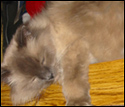 And lest I forget, Malcolm the cat is real. He’s actually a combination of my mother’s cat, affectionately known as psychokitty, and my sister’s cat Malcolm (pictured at right). You can read the book and decide which cat donated the personality and which donated the looks.
And lest I forget, Malcolm the cat is real. He’s actually a combination of my mother’s cat, affectionately known as psychokitty, and my sister’s cat Malcolm (pictured at right). You can read the book and decide which cat donated the personality and which donated the looks.- If you look hard you might find my buddy and fellow author Danelle Harmon. She’s right in there with William Dunford, the hero from Minx, who makes a brief appearance (he’s still a bachelor in How to Marry a Marquis, which actually takes place before Minx.)
Inside To Catch an Heiress
- The working title of this book was Starry Night. If you read carefully, you will find a theme throughout the book about stars and starry nights.
- I had a lot of fun with the “definitions” that appear at the beginning of each chapter, but they turned out to be a LOT of work. It turns out that dictionary definitions are not public domain, which meant I would have to apply for permission to use them in my book. This meant that all the definitions would have to come from the same dictionary, so that I could make only one application for permission. The problem was, we discovered this after I’d written the book. So I ended up hunched over the Oxford English Dictionary (the kind you need a magnifying glass to read) for hours, looking up new definitions. Three cheers for Oxford University Press, who graciously waived their permission fees, obviously deciding that romance novels = excellent public relations!
- To Catch an Heiress is the only one of my books that was conceived out of an opening line. The sentence: “Caroline Trent hadn’t meant to shoot Percival Prewitt, but she had, and now he was dead,” popped into my head, and I knew I had to figure out a book to go with it. (Except that Caroline wasn’t yet named Caroline. See below.)
- Caroline’s name changed twice during the first few weeks of writing. First I named her Nathalie, but that didn’t seem to fit. Then I named her Lily. After about two hours it became apparent that wouldn’t work. Lily sounded too much like Ellie (the heroine of Brighter Than The Sun, which I’d just finished writing), and while this probably would not have confused any of my readers, it confused the heck out of me!
Inside Brighter Than the Sun
- Brighter Than the Sun had the working title of The Color of the Sun. I had wanted Charles to say that Ellie’s hair was the exact color of the sun at sunset. In the end, however, I thought it would be more romantic for him to say it was actually brighter than the sun.
- A lot of people have asked me why Robert and Victoria (hero and heroine of Everything And The Moon) never made an appearance in Brighter Than the Sun. The answer is that the plot wouldn’t allow it. If Victoria had been anywhere in the vicinity, her sister Ellie would have had the option of moving in with her, and thus would never have entered a marriage of convenience with Charles. It would have been a very short book.
- Charles makes a very brief appearance in my third novel, Minx, when he offhandedly mentions that he needs to marry soon. When I wrote Minx, I had no idea what his desperate situation might be, but I figured it would be a great set-up for a future book.
- The berry jam incident is entirely true. In 1988, my father sustained second-degree burns over 25% of his body, when a pressure cooker popped open (it was his fault; don’t go trashing your pressure cookers), and scalding hot plum jam exploded across the room. He was hospitalized for three days, but I’m happy to report he made a complete recovery. Thanks to my dad for providing me with all the details of the accident. Incidentally, it required a flotilla of housecleaners to clean the kitchen after the explosion. Picture a patina of plum, on every surface, in every nook and cranny.
Inside Everything And The Moon
- Did you all catch the mention of Alex, Duke of Ashbourne (Splendid‘s hero) on p. 357? Even though Everything And The Moon was written after Splendid, it takes place at the same time, so when Mrs. Brightbill says that the duke is “dangling after some American,” she is referring to Emma Dunster, Splendid‘s heroine.
- Robert has made appearances in a few of my later books. You can find him running from debutantes in The Duke and I (which is set earlier than Everything And The Moon), and then again in Romancing Mr. Bridgerton (which is set in 1824, so he’s well and married by then.)
- Robert, who is a bit of a science geek, recites the Linnaean system of classification when he is trying not to think of Victoria taking a bath. My first instinct was to have him recite the periodic table. But the earliest version of the periodic table was not presented to the scientific community until 1869 (by Dmitri Mendeelev, a Russian chemist). I am a bit of a science geek myself, and if you haven’t heard Tom Lehrer singing “The Elements Song,” I highly recommend it.
Inside Minx
- Check out Dunford in How To Marry a Marquis. He’s got a minor (but fun!) part. Even though How To Marry a Marquis was written after Minx, it takes place several years earlier, so Dunford is still very much a rakish bachelor. It was kind of fun to write his scene, all the while thinking, “Heh heh, you have NO idea what I’ve got in store for you!”
- Unfortunately, I found out that the Brazilian-Portuguese translator of How To Marry a Marquis swapped Dunford’s name with that of the villain. I was aghast! Now one of my nicest heroes is attacking women! (But only in Brazil.) I am happy to report, however, that the errant version of Como se casar com um marquês is now out of print, a new version was published in Brazil in 2021, and Dunford is back to his gentlemanly ways.
- Charles Wycombe, the hero of Brighter Than the Sun, is a very minor character in Minx and mentions that he needs to marry soon. When I wrote Minx, I had no idea what his desperate situation was, but I figured it would be a great set-up for another book.
- Rufus the bunny was inspired by my own houserabbit, Rutherford (Rufie for short.) Unlike Rufus, my sweet bunny has never chewed up important documents. (He did, however, take a big chunk out of a Lisa Kleypas novel.)
Inside Dancing At Midnight
- Dancing At Midnight had the working title of Spellbound. I was never particularly attached to this title, though, and in fact had only chosen it because it went along with Splendid.
- Of all my books, Dancing At Midnight required the most extensive revisions. In the original version, John’s main reason for pushing Belle away was societal strictures, not his feelings of remorse over what happened during the war. During the revision process, I learned that nothing is more extensive than changing a character’s motivation. I had to go through the book and reexamine every word and thought of John’s. It was a difficult and time-consuming job, but I think the book benefited greatly.
- I will confess that unlike Belle, I have not read the complete works of Shakespeare. And I’m pretty sure I never will. I did, however, play the role of Luciana in my high school production of A Comedy of Errors. This is not to be eclipsed, however, by my pivotal performance as “woman of Verona #3” in Kiss Me, Kate, which is based on The Taming of the Shrew.
Inside Splendid
- Emma is named after my sister Emily, who designed this website! Emma’s last name (Dunster) is named after my husband’s college dorm. My dorm was Mather House, which was right next door, and not nearly as attractive. This isn’t the only time I have name characters after alma maters, the characters in How to Marry a Marquis were also named for schools my husband and I went to.

Dunster House, with its iconic tower, is often featured in photos of Harvard and Charles River. Share Alike 2.5 image per Wikimedia Commons - Westonbirt (Alex’s ancestral home), is actually the name of the boarding school I attended in England. Alex’s home wouldn’t have looked like my Westonbirt, though. The school’s main building was constructed during Victorian times, at least fifty years after Splendid took place.
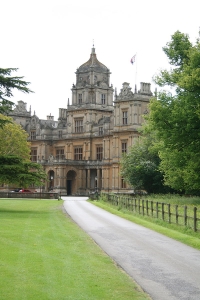
Westonbirt School, in Tetbury, Share Alike 3.0 image per Wikimedia Commons.



